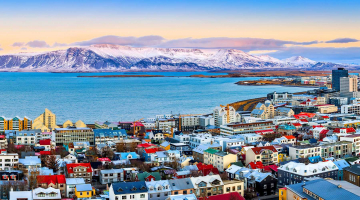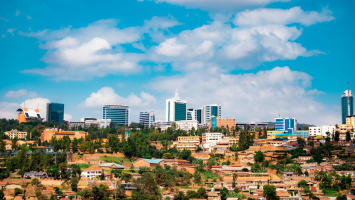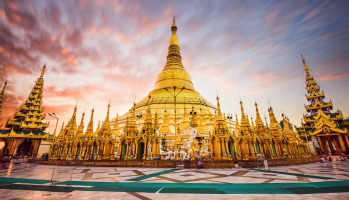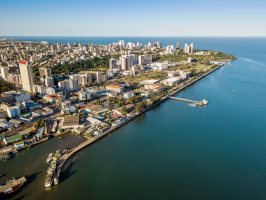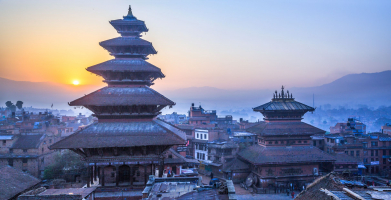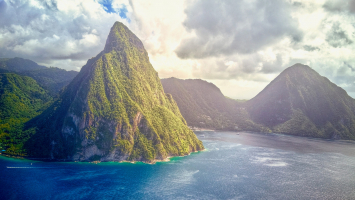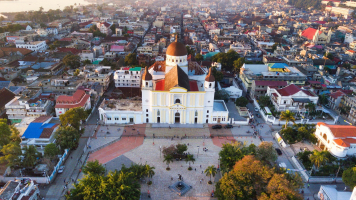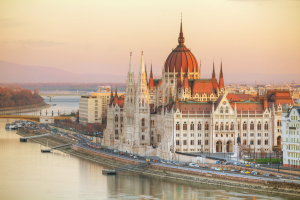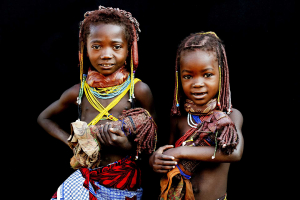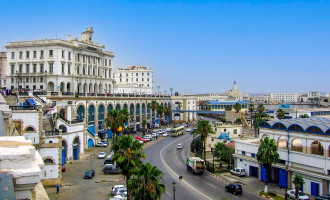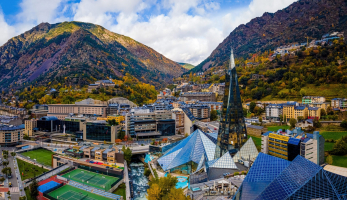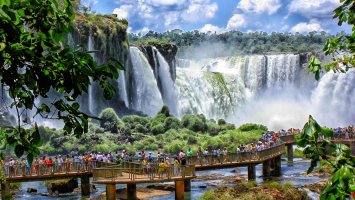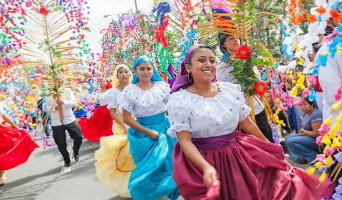Top 11 Unique Cultural Characteristics In Armenia
Armenian culture exemplifies the character of the Silk Road, since its particular customs and unique art forms are the result of centuries of merging of ... read more...Western and Oriental cultures. The Armenians call themselves Hayq and their homeland Hayastan after the legendary hero Hayk, a claimed descendant of Noah, who was known to the ancient Persians as Armina and the Greeks as Armenioi. Armenians take their customs seriously since they were formed through blood and tears. Today, Armenia is regarded as one of the world's oldest nations, with its distinct culture demonstrating the resilience of the human spirit. Here are some of the unique cultural characteristics of Armenia that you can learn more about.
-
Around 401 A.D., Armenian literature began. Moses of Khorene established the majority of the literary arts in the fifth century. The elements of literature have altered over time as stories and myths have been passed down through generations. Movses Khorenatsi was a well-known Armenian writer of the fifth century. Mesrop Mashtots is credited with inventing the Armenian alphabet. This event, which occurred in the fifth century, is regarded as one of the most significant turning points in Armenian literature. Movses Khorenatsi was also a well-known Armenian historian of late antiquity and the author of the History of the Armenians.
Alexander Tertzakian was a well-known Armenian writer in the late 17th century who wrote several works regarded classics in Armenia. Throughout the nineteenth century, writer Mikael Nalbandian strived to establish a new Armenian literary identity. The Armenian national song, Mer Hayrenik, may have been inspired by Nalbandian's poem "Song of the Italian Girl."Foreign domination, the Armenian Genocide, and 20th-century Soviet censorship have all hampered the establishment of local literary heritage. Despite these difficulties, local legends were kept and spread through oral storytelling. Modernist authors who continue to express themselves via the written word were given a blank canvas for current Armenian literature in the twentieth century.
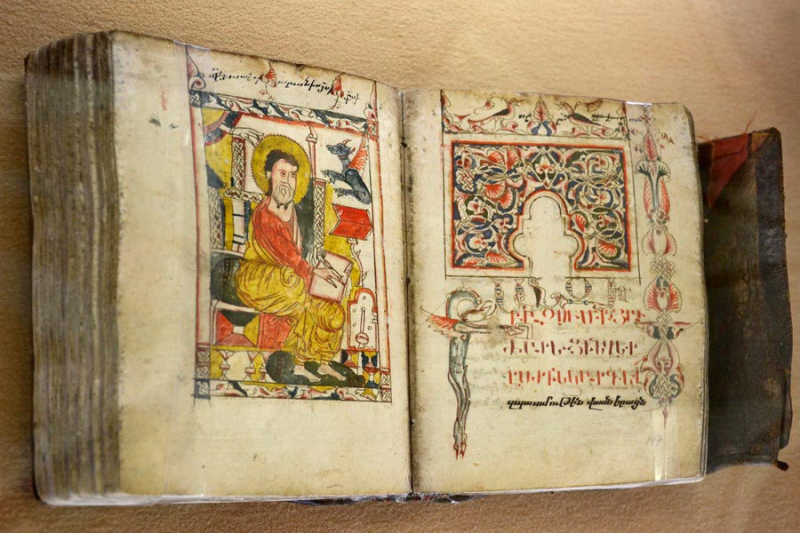
https://www.advantour.com/ 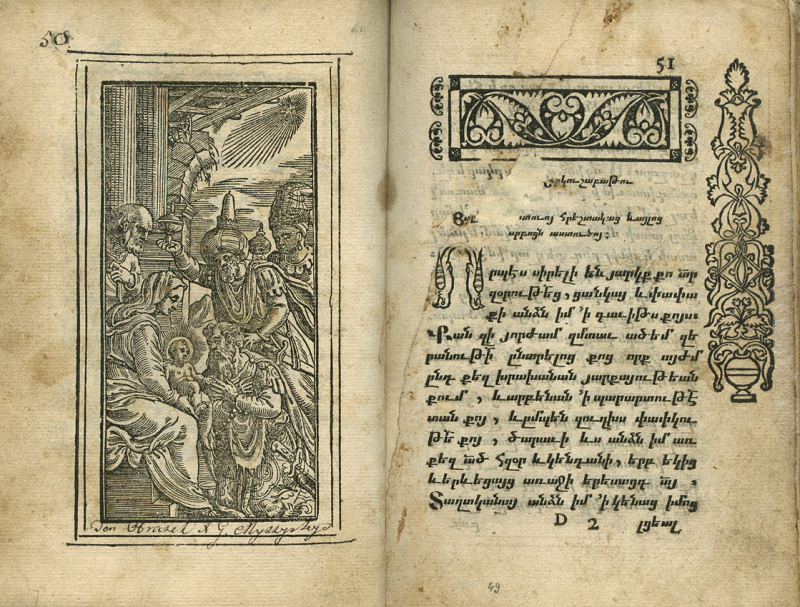
https://attarmenia.com/ -
Armenian dance traditions are among the oldest, richest, and most diverse in the Near East. There are rock paintings portraying scenes of country dancing dating from the fifth to third millennia B.C. in Armenia's higher highlands. These dances were most likely accompanied by specific melodies or musical instruments. Moses of Khorene (Movsés Khorenats'i) had heard in the 5th century how the old descendants of Aram (Armenians) reference these things (epic tales) in ballads for the lyre and their songs and dances. This can be seen as one of Unique Cultural Characteristics In Armenia.
The martial dance Yarkhushta is one of the most energetic Armenian dances. It is thought that Yarkhushta originated in the early Middle Ages because it is described in the works of Movses Khorenatsi, Faustus of Byzantium, and Grigor Magistros. Armenian soldiers have traditionally performed Yarkhushta before military engagements, partially for ritualistic purposes and partly to cast off anxiety and build battle spirit.
Men execute the dance in couples, facing each other. The essential feature of the dance is a forward movement in which participants approach one another quickly and violently clap onto the palms of dancers in the opposite row's hands.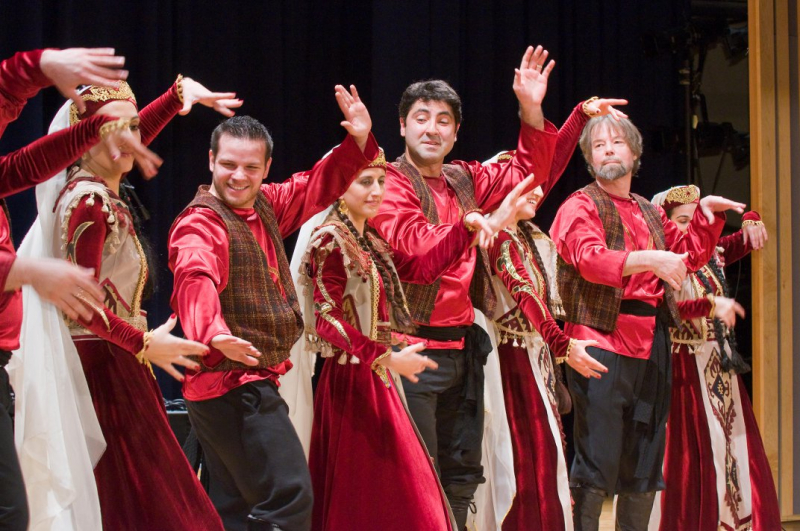
https://www.smithsonianmag.com/ 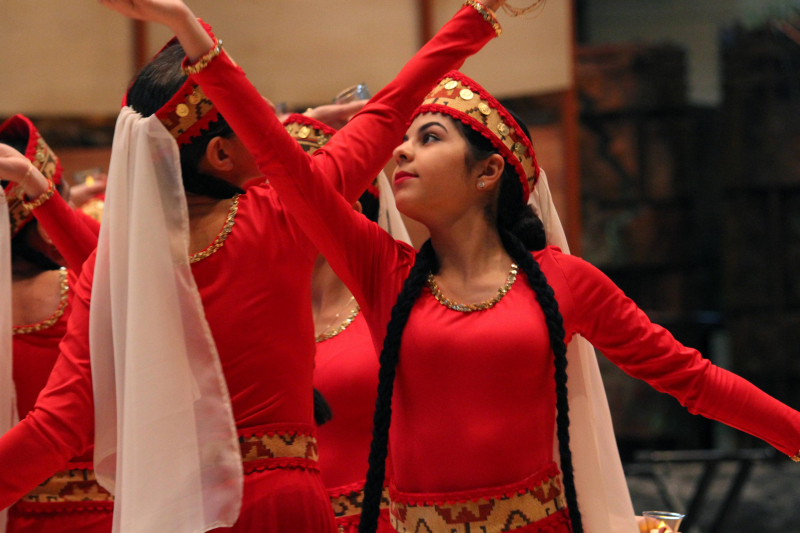
https://araxdance.wordpress.com/ -
Armenian architecture includes works that have an aesthetic or historical connection to the Armenian people. It is difficult to place this architectural style within definite geographical or chronological boundaries, however many of its monuments were built in historical Armenia, specifically the Armenian Highlands. The greatest achievement of Armenian architecture is widely acknowledged to be its medieval churches and seventh-century churches, however perspectives differ on which aspects are most noteworthy.
There are four distinct periods of Armenian classical architecture. The first Armenian churches were constructed during the fourth and seventh centuries, commencing with the conversion of Armenia to Christianity and ending with the Arab invasion of Armenia. Early churches were generally basic basilicas with side apses. The characteristic cupola cone in the center was frequently utilized by the 5th century. By the 7th century, centrally-planned churches had been constructed, as well as a more intricate niched buttress and radiating Hrip'simé style. Most of what we now call classical Armenian architecture had developed by the time of the Arab invasion.
Today, guests will be treated to a plethora of varied and wonderful glimpses into Armenian culture. Whether it's the Matenadaran Institute of Ancient Manuscripts, captivating choral chanting, or miniature medieval paintings, Armenia is sure to broaden your appreciation for the arts while also broadening your horizons.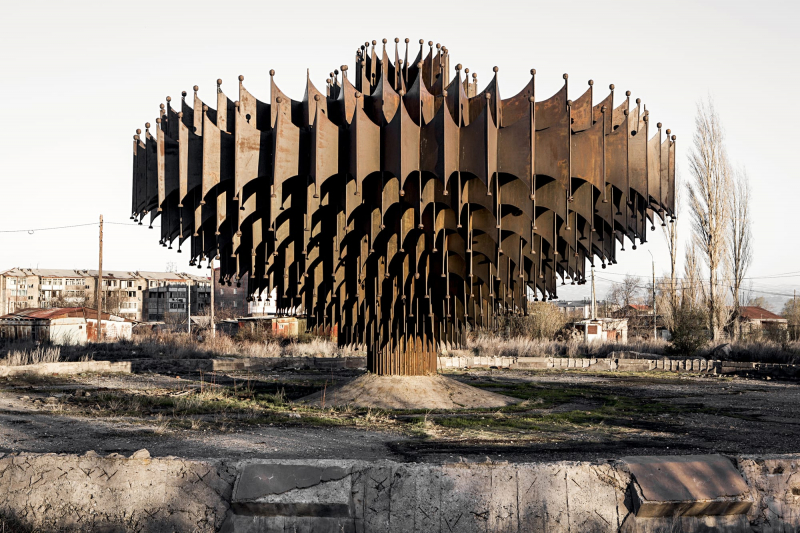
https://divisare.com/ 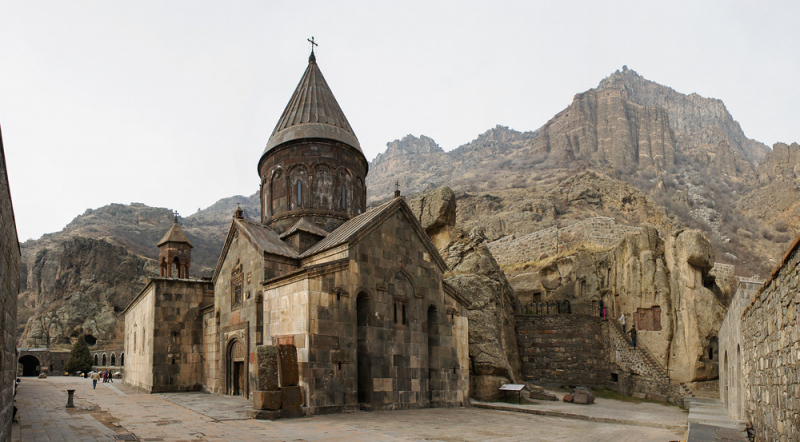
https://architectureofcities.com/ -
Though women historically predominated in Armenian villages, numerous notable carpet-weavers in Karabakh are known to have been men, and in some cases entire families took up the profession. The oldest preserved Armenian carpet from the region, known as Artsakh during the medieval era, originates from the early 13th century and comes from the village of Banants (near Gandzak). The Armenian term for carpet, gorg, appeared in historical records for the first time in a 1242-1243 Armenian inscription on the wall of the Kaptavan Church in Artsakh. This is one of Unique Cultural Characteristics In Armenia that you can learn more.
According to art historian Hravard Hakobyan, "Artsakh carpets hold a distinctive place in the history of Armenian carpet-making." The portrayal of dragons and eagles was a common motif and design found on Armenian carpets. They were varied in style, rich in color and ornamental themes, and were even classified based on the creatures represented on them, such as artsvagorgs (eagle-carpets), vishapagorgs (dragon-carpets), and otsagorgs (serpent-carpets).
The art of carpet weaving was also inextricably linked to the production of curtains, as evidenced by a passage by Kirakos Gandzaketsi, a 13th-century Armenian historian from Artsakh, who praised Arzu-Khatun, the wife of regional prince Vakhtang Khachenatsi, and her daughters for their weaving expertise and skill.
Foreign visitors to Artsakh were likewise impressed by the Armenian carpet; the Arab geographer and historian Al-Masudi stated, among other things, that he had never seen such carpets before in his life.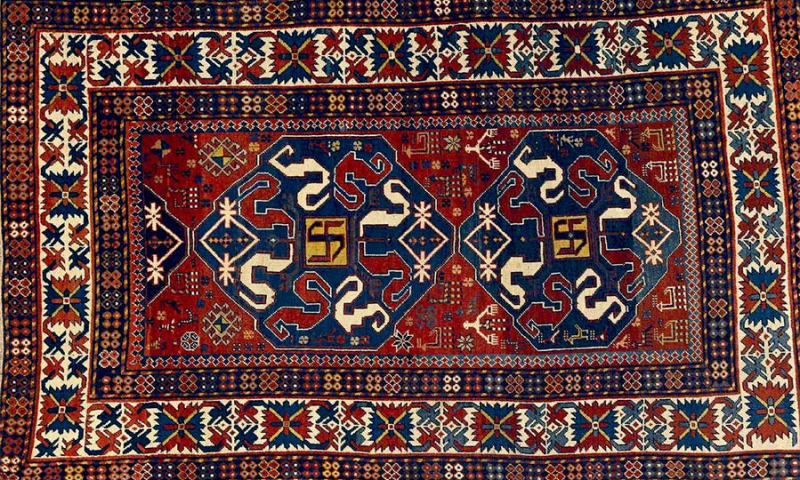
https://lifeisanepisode.com/ 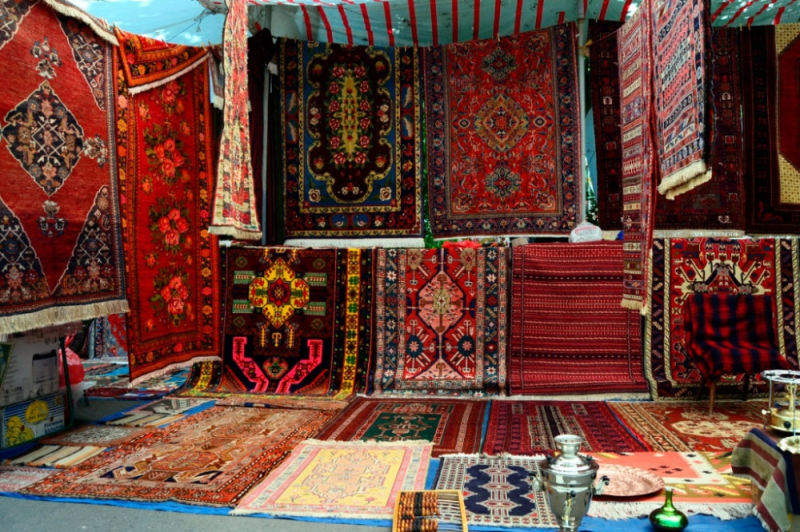
https://www.gardmantour.com/ -
Armenian art is a distinct kind of art that has evolved over the last five millennia as the Armenian people have lived on the Armenian Highland. Armenian architecture and miniature painting have dominated Armenian art for centuries and have demonstrated steady progress. Sculpture, fresco, mosaic, ceramic, metalwork, engraving, and textiles, particularly Armenian carpets, are other genres of Armenian art.
In the Iron Age, Prehistoric Armenia was home to the Urartu civilisation, which was known for its early metal sculptures, often of animals. The region was frequently contested by the huge empires controlling the adjacent regions of Persia, Mesopotamia, and Anatolia, all of which had a significant influence on Armenian art. The Armenians were early converts to Christianity, and they produced their own version of Eastern Christian art, making extensive use of icons, Armenian miniatures in books, and the unique architecture of their churches and monasteries. The prevalence of figurative relief carvings on the outside of churches, which was unknown in Byzantium, was a particular Armenian trait that may have impacted European Medieval art.
The National Art Gallery in Yerevan houses almost 16,000 pieces dating back to the Middle Ages, illustrating Armenia's rich tales and legends of the time. It also houses works by various European masters. Other notable collections of fine art on display in Yerevan include the Modern Art Museum, the Children's Picture Gallery, and the Martiros Saryan Museum. Furthermore, there are many private galleries in operation, with many more opening every year, with rotating exhibitions and sales.
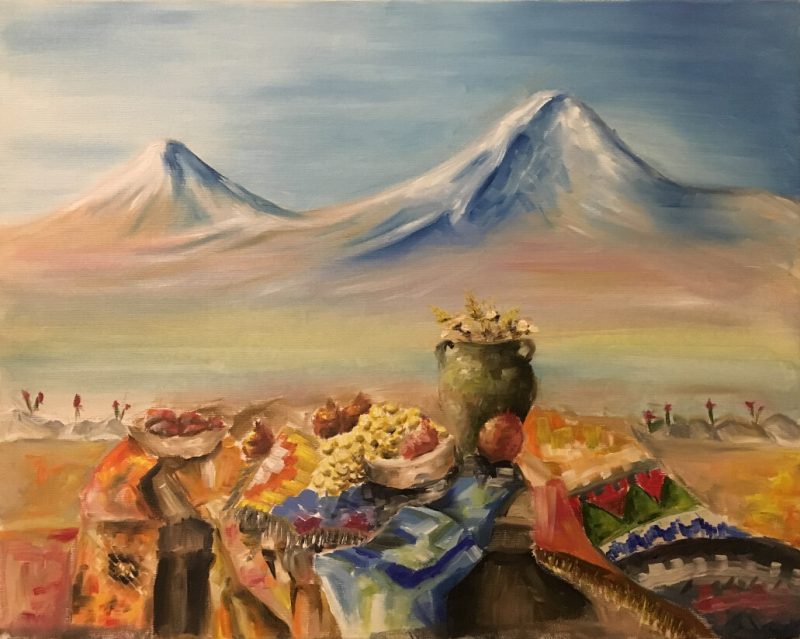
https://armenianart.am/ 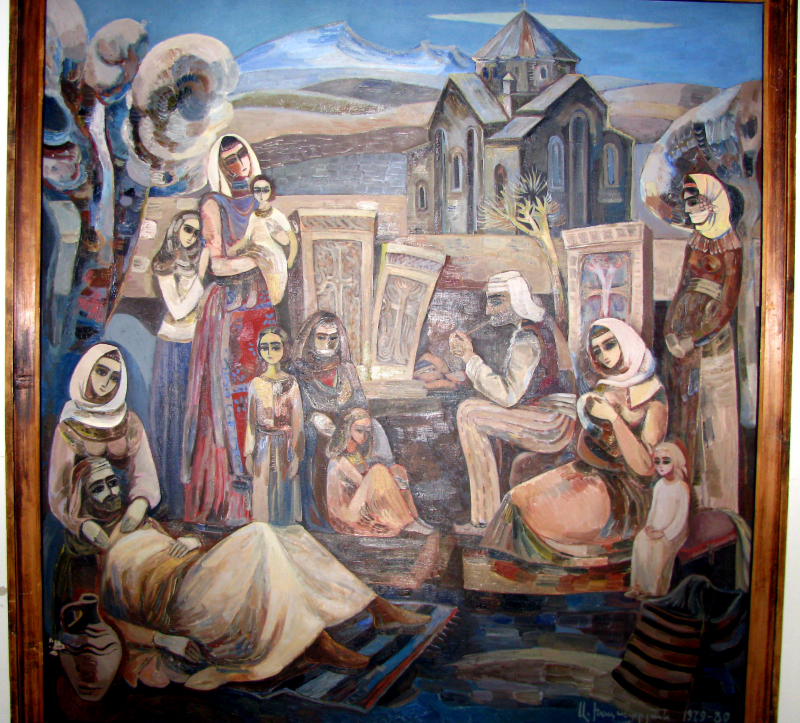
https://en.wikipedia.org/ -
Armenian needlelace, like Lacis, appears to be a direct successor of netmaking. Whereas lacis entails adding decorative threads to a net ground, Armenian needlelace includes decorating the net itself. There is archaeological evidence that lace was used in prehistoric Armenia, and the prevalence of pre-Christian iconography in traditional designs would surely indicate a pre-Christian origin for this art form. In contrast to Europe, where lace was reserved for the elite, lace was used to decorate everything from traditional headscarves to undergarments in Armenia. Lacemaking was thus a part of many women's life.
Lace is formed by tying knots, which are normally tied onto the previous round of the item, leaving small loops of thread on which to tie the following round of knots. Patterns are made by altering the length of the loops, removing loops from previous rounds, adding extra loops, and so on.Lace can be made directly onto the hem of the fabric being edged when used as an edging. When beginning a doily or freeform object (such as the birds and flowers that adorn traditional headscarves), a succession of loops is tied onto a slip knot and pulled tight to complete the first circle.
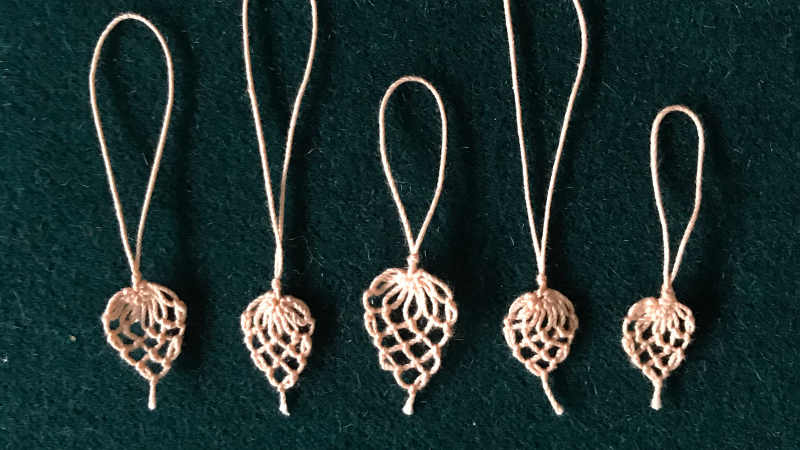
https://madmuseum.org/ 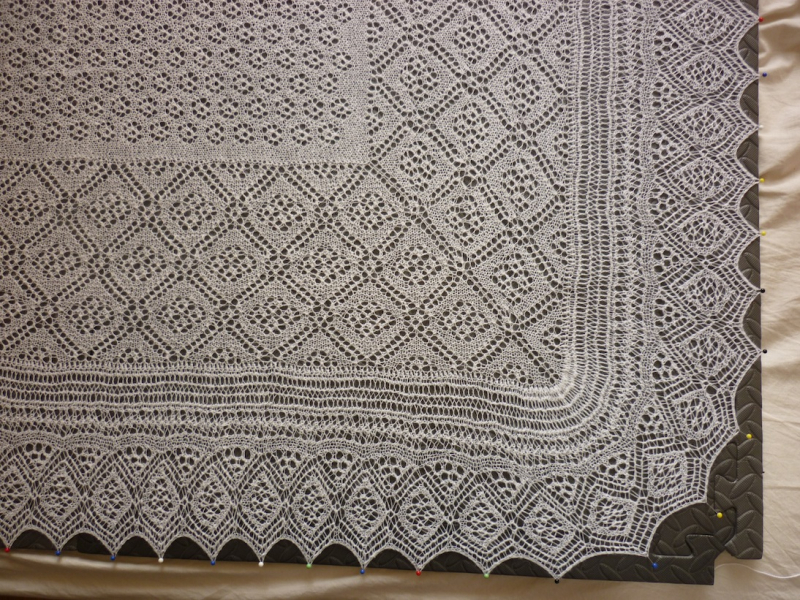
https://tomofholland.com/ -
One of the most important aspects of Armenian culture is music, which has introduced new kinds of music while retaining old genres in recent years. This is demonstrated by the world-class Armenian Philharmonic Orchestra, which performs at the newly rebuilt Aram Khachaturian Concert Hall in the Yerevan Opera House, where a complete season of opera is also available. Several chamber ensembles, including the Komitas Quartet, Hover Chamber Choir, National Chamber Orchestra of Armenia, and Serenade Orchestra, are also well-known for their musicianship.
Classical music can also be heard in smaller settings such as the Yerevan State Musical Conservatory, the Komitas Chamber Music Hall, and the Komitas Museum. Jazz is popular in Armenia, especially during the summer, when live concerts in the city's many outdoor cafés and parks are common. Armenian rock has contributed to the culture of rock. The apricot flute, also known as duduk (pronounced [duduk] or doo-dook), is the most well-known Armenian folk instrument. Armenian performers in the current era have combined folk music with more modern jazz and rock styles, so that traditional music continues to influence their work.
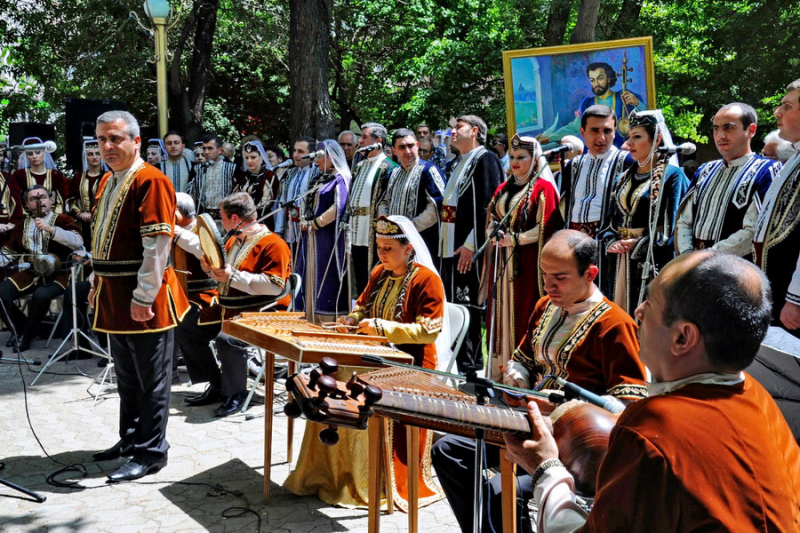
https://www.advantour.com/ 
https://armeniadiscovery.com/ -
According to recent study, the Armenian language dates back to the early stage of Indo-European diversification and dispersion around 5000 years ago, or maybe as early as 7,800 years ago. Trade and conquest compelled the language to evolve, introducing new terms into the people's lexicon. It can be considered as one of Unique Cultural Characteristics In Armenia.
By the fourth century, Armenian literature and books had appeared. The written language of the time, known as classical Armenian or Grabar, remained the Armenian literary language until the 19th century, with minor alterations. Meanwhile, spoken Armenian evolved independently of writing Armenian. When Armenian settlements became separated by geography or politics, many dialects arose, and not all of these languages are mutually intelligible. English is a widely used business language.
Armenian was historically spoken in the Armenian Highlands, but it is now widely spoken throughout the Armenian diaspora. The Armenian alphabet, introduced in 405 AD by the priest Mesrop Mashtots, is used to write Armenian. It is believed that there are between 5 and 7 million Armenian speakers worldwide.
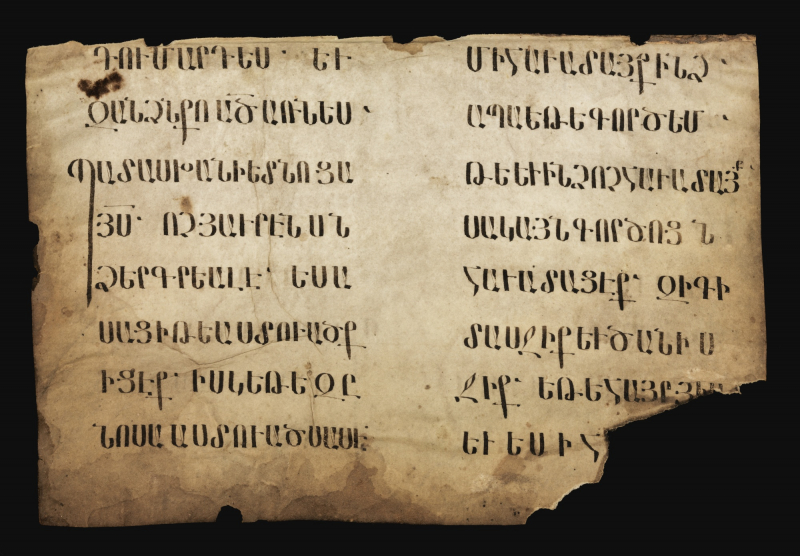
https://www.peopleofar.com/ 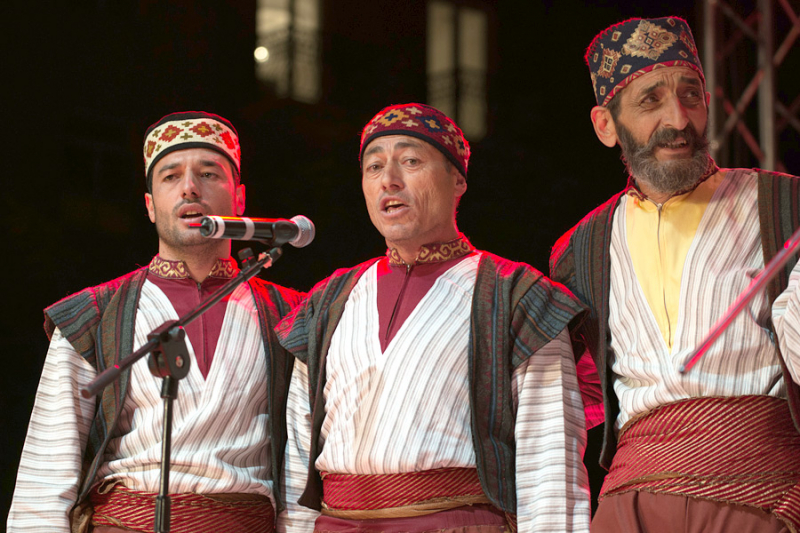
https://www.advantour.com/ -
Armenians participate in a diverse range of sports. Football is Armenia's most popular sport. Wrestling, weightlifting, judo, chess, and boxing are also prominent sports. Armenia's rugged topography lends itself well to the practice of sports such as skiing and rock climbing. Because Armenia is a landlocked country, water sports may only be conducted on lakes, particularly Lake Sevan. At the international level, Armenia has had great success in chess, weightlifting, and wrestling. Armenia is also a member of the Union of European Football Associations (UEFA), the Federation of International Bandy (FIB), and the International Ice Hockey Federation (IIHF). It also serves as the site of the Pan-Armenian Games.
Armenian football players are well renowned in post-Soviet countries for their abilities and well-developed methods. This is primarily owing to the success of Armenian players like Khoren Hovhannisyan, Eduard Markarov, Levon Ishtoyan, Nikita Simonyan, and others. One of the greatest victories of an Armenian team occurred in the golden year of 1973, when the famed Armenian club Ararat Yerevan won both the Soviet Top League and the Soviet Cup.Armenia has had great success in chess since its independence. Armenia's men's team has won the Chess Olympiad three times, placing them as the fifth most successful team in chess history. Famous chess players of Armenian heritage include Tigran Petrosyan and Garry Kasparov.

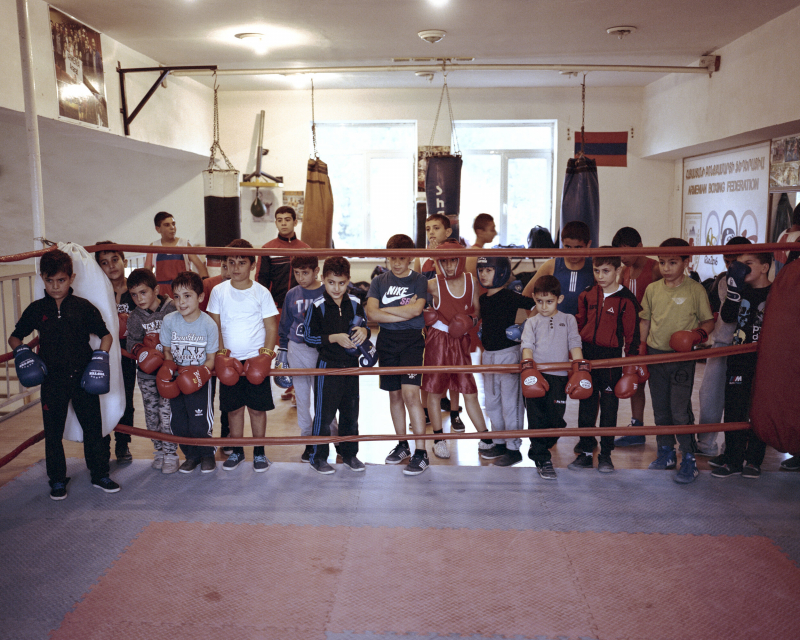
-
Armenians are simple and open-hearted in communication, and it may appear that there is no personal space in Armenia: people here prefer to speak face to face, staring right in one's eyes, without losing contact or gap between them. It is not uncommon for them to ask deep and intimate questions. Despite this, Armenians are very polite and empathetic, and they care about other people's troubles and hardships. If someone needs assistance on the street or in public transportation, almost no Armenian will be unconcerned. This is one of Unique Cultural Characteristics In Armenia you should know.
Here, the term "merci," which is adopted from French, is frequently used instead of the long Armenian "shnorakalutsyun," which also means "thank you." And the endearment term "jan" is unavoidable; you will hear it all the time! It is difficult to translate and conveys a tender attitude toward the interlocutor, so don't be surprised if you hear your name in conjunction with "jan." The term "tsavt tanem," which literally translates as "I will carry your grief on myself," is another colorful statement of sympathy and occasionally compassion.
So these are Armenians who can be direct at times, but are also compassionate, tender, and attentive. Come to Armenia and you will learn about these and many more intriguing and distinctive local traditions! And it will be much easier with our Cultural, Christian, and Wine Tours: you will experience the authentic way of life of the local population, meet friendly locals, and learn a lot from our trained guides.
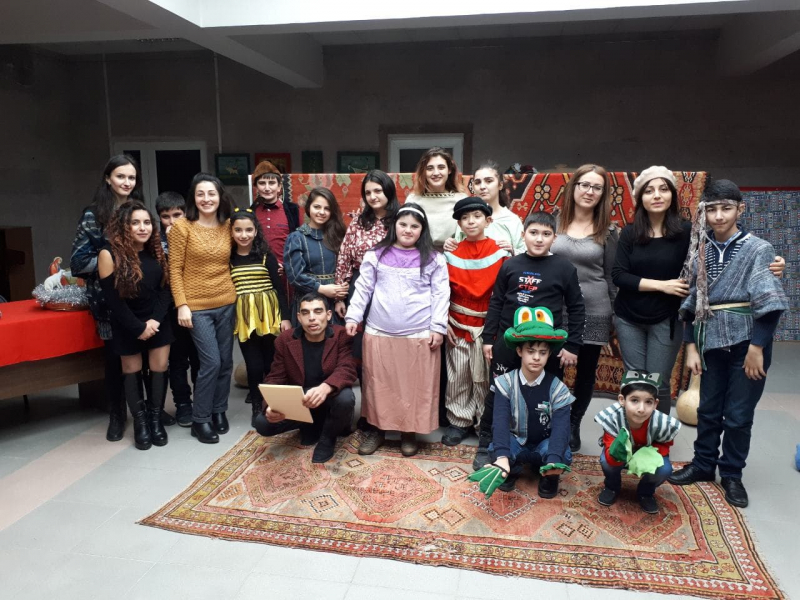
https://pyunic.org/ 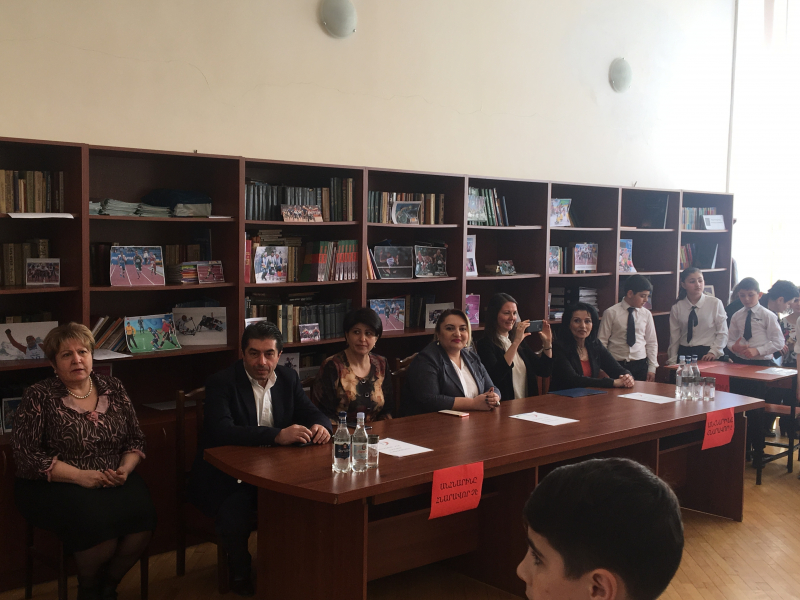
https://pyunic.org/ -
In this lovely country, keeping a safe distance from one another is also strictly enforced. People tend to converse to one another at a much closer distance than a Westerner is accustomed to. An arm's length of space is acceptable when dealing with business colleagues, but it is less than an arm's length when conversing to family members, friends, or persons of the opposite sex.
The more one gets to know someone, the more touching there is. Regardless of the connection, males and females rarely exhibit affection by touching (sister, wife, etc). It is crucial to note, however, that in the more populated areas of Yerevan, Vanadzor, and Gyumri, the "westernized" manner of communication and physical touching is more prominent, but still not widespread.
Touching is not done when chatting, regardless of the topic, unless the person knows the other person well. Regional places have more intimate conversations than metro areas. Don't be startled if someone "pets" you in the middle of a chat. It is generally an indication of being adored.
https://blogs.worldbank.org/ 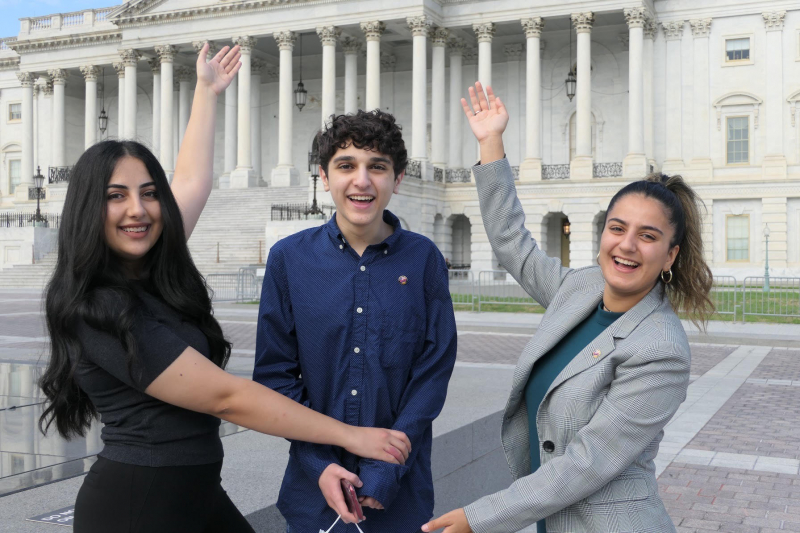
https://armenianweekly.com/














